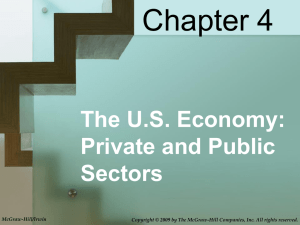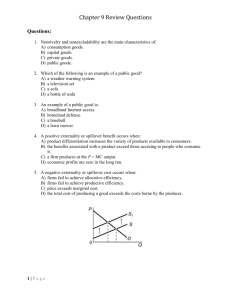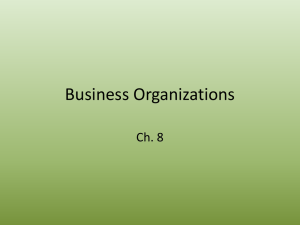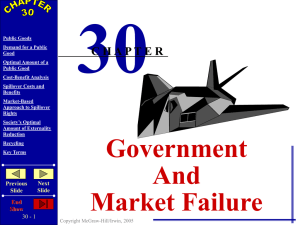2011_teacher_20110126_0930_2
advertisement
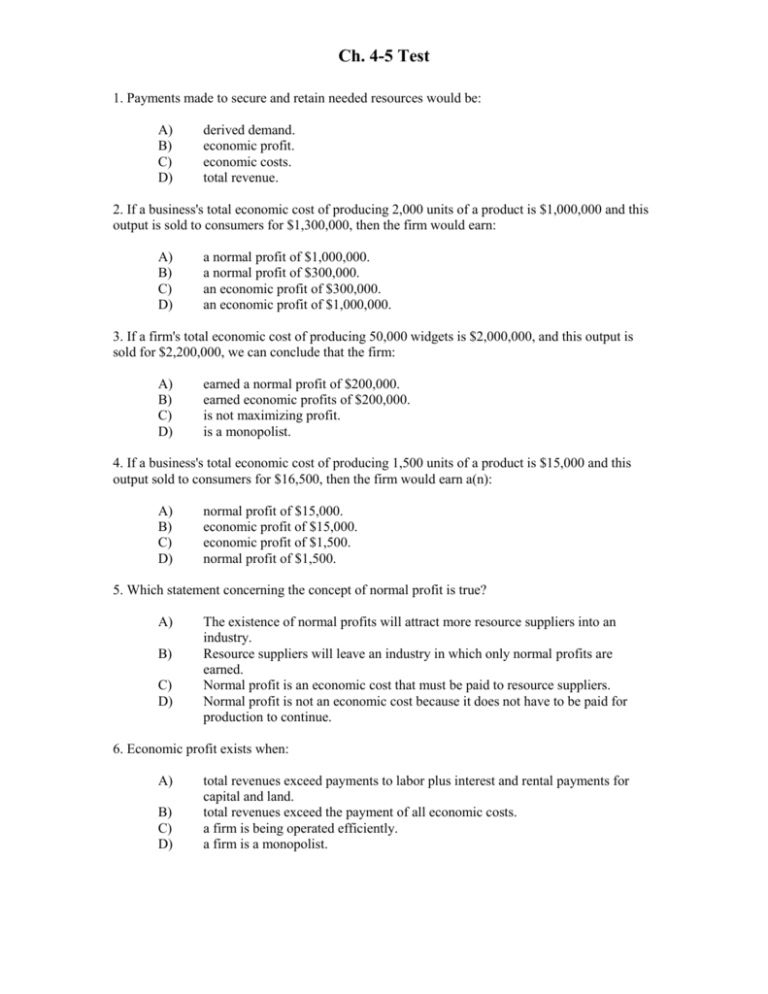
Ch. 4-5 Test 1. Payments made to secure and retain needed resources would be: A) B) C) D) derived demand. economic profit. economic costs. total revenue. 2. If a business's total economic cost of producing 2,000 units of a product is $1,000,000 and this output is sold to consumers for $1,300,000, then the firm would earn: A) B) C) D) a normal profit of $1,000,000. a normal profit of $300,000. an economic profit of $300,000. an economic profit of $1,000,000. 3. If a firm's total economic cost of producing 50,000 widgets is $2,000,000, and this output is sold for $2,200,000, we can conclude that the firm: A) B) C) D) earned a normal profit of $200,000. earned economic profits of $200,000. is not maximizing profit. is a monopolist. 4. If a business's total economic cost of producing 1,500 units of a product is $15,000 and this output sold to consumers for $16,500, then the firm would earn a(n): A) B) C) D) normal profit of $15,000. economic profit of $15,000. economic profit of $1,500. normal profit of $1,500. 5. Which statement concerning the concept of normal profit is true? A) B) C) D) The existence of normal profits will attract more resource suppliers into an industry. Resource suppliers will leave an industry in which only normal profits are earned. Normal profit is an economic cost that must be paid to resource suppliers. Normal profit is not an economic cost because it does not have to be paid for production to continue. 6. Economic profit exists when: A) B) C) D) total revenues exceed payments to labor plus interest and rental payments for capital and land. total revenues exceed the payment of all economic costs. a firm is being operated efficiently. a firm is a monopolist. Ch. 4-5 Test 7. The idea that the desires of resource suppliers and producers to further their own self-interest will automatically further the public interest is known as: A) B) C) D) consumer sovereignty. the invisible hand. derived demand. profit maximization. 8. Which best describes the "invisible hand" concept? A) B) C) D) Sufficiently detailed central direction of an economy will maximize the public's best interests. The market system works best when resources are highly substitutable. The problem of scarcity can best be overcome in a system of mixed capitalism. The desires of producers and resource suppliers to further their own self-interest will automatically promote the social interest. 9. The idea that firms and resource suppliers in seeking to further their own self-interests in a competitive market economy also simultaneously promotes the public or social interest is a description of: A) B) C) D) the guiding function of prices. capital accumulation. the "invisible hand." "dollar votes." 10. The influential book written by Adam Smith was: A) B) C) D) The Worldly Philosophers. The Affluent Society. The Age of the Economist. The Wealth of Nations. 11. The "invisible hand" concept to describe the guiding function of prices was developed by: A) B) C) D) Henry George. Adam Smith. Milton Friedman. John Kenneth Galbraith. 12. About what percentage of total personal consumption expenditures are for services? A) B) C) D) 20 36 58 75 Ch. 4-5 Test 13. Expenditures on durable goods constitute approximately what proportion of personal consumption expenditures? A) B) C) D) 6 percent 12 percent 35 percent 51 percent 14. Expenditures on nondurable goods constitute approximately what proportion of personal consumption expenditures? A) B) C) D) 6 percent 14 percent 30 percent 51 percent 15. A nondurable good is a product that: A) B) C) D) is constructed with flexible materials. is used only for personal consumption. has as an expected life of 3 years or less. has an expected life of 3 years or more. 16. A durable good is a product that: A) B) C) D) is well made. is constructed of steel. has an expected life of 3 years or more. has an expected life of more than five years. 17. Clothing is an example of a: A) B) C) D) service. durable good. nondurable good. substitute good. 18. If a product generally has an expected life of six months, it is classified as a: A) B) C) D) perishable good. durable good. nondurable good. personal good. 19. Sole proprietorships constitute approximately what proportion of business firms in the United States? A) B) C) D) 10 percent 20 percent 45 percent 73 percent Ch. 4-5 Test 20. The type of business that is most common is the: A) B) C) D) partnership. corporation. conglomerate. sole proprietorship. 21. Of all business enterprises in the United States, corporations constitute approximately: A) B) C) D) 75 percent and account for 75 percent of all business sales. 8 percent and account for 90 percent of all business sales. 20 percent and account for 90 percent of all business sales. 20 percent and account for 50 percent of all business sales. 22. The major source of production in the economy comes from: A) B) C) D) conglomerates. corporations. partnerships. sole proprietorships. 23. Corporations in the United States produce approximately what percentage of the nation's total business output? A) B) C) D) 20 40 60 90 24. One of the major advantages of the sole proprietorship is that: A) B) C) D) the owner is protected by the concept of limited liability. it is easier to borrow money because lenders have to deal with only one person. there is little red tape and expense in organizing such a business. there are tax advantages for firms that are highly profitable. 25. Which is true of partnerships? A) B) C) D) Each partner is responsible for all business debts. Each partner is liable for only his or her share of business debts. All partners are protected by the concept of limited liability. Each partner must post a bond to guarantee that all business debts will be paid. 26. The legal concept of limited liability is important in which of the following types of business organizations? A) B) C) D) monopolies corporations partnerships sole proprietorships Ch. 4-5 Test 27. Shares of ownership in corporations are referred to as: A) B) C) D) limited liability. collateral. stocks. bonds. 28. A person receives a paper asset from a corporation that is a promise from the corporation to repay a loan at a fixed rate of interest. This type of asset is referred to as a: A) B) C) D) bank loan. share. stock. bond. 29. The issue of the separation of ownership and control is concerned with the fact that: A) B) C) D) politicians pass laws to control corporations, but since corporations cannot vote, they cannot protest such control. major decisions in large corporations are generally made by professional managers rather than the owners of the corporation. most farms are owned by landlords who do not live on the farms. many small proprietorships are actually controlled by large corporations. 30. The profits of a sole proprietorship are: A) B) C) D) subject to limited liability. subject to unlimited liability. taxed as personal income. taxed as corporate income. 31. One principal advantage of the corporations is that owners: A) B) C) D) are not taxed for income received. always control the company. are sole proprietors. have limited liability. 32. A pure market economy tends to produce too much of goods which: A) B) C) D) involve spillover costs. are public goods. have high prices. are not scarce. Ch. 4-5 Test 33. A situation in which a benefit or a cost associated with an economic activity spills over to third parties is called: A) B) C) D) a public good. the exclusion principle. an externality. the free-rider problem. 34. Which is not an example of an externality or spillover? A) B) C) D) air pollution from automobiles water pollution by a chemical factory the rise in the price of gasoline because of higher crude oil prices a decrease in your chances of getting polio if others get polio immunization shots 35. If an action results in spillover costs, then the market: A) B) C) D) price is below the optimal price to society. price is above the optimal price to society. supply curve is too low. quantity is too low. 36. An example of a negative externality or spillover cost created by the market system would be: A) B) C) D) poverty. unemployment. income inequality. environmental pollution. 37. Spillover costs can best be defined as the: A) B) C) D) costs associated with private production which are shifted to society as a whole. sum of all private costs in a given society. costs of running all units of government. costs of providing public goods and services. 38. If some activity creates external costs as well as private costs, then economic theory suggests that the activity ought to be: A) B) C) D) left alone. prohibited by law. encouraged with subsidies. discouraged by taxes or other measures. 39. If government intervenes when spillover costs exist in an industry, it should attempt to shift the industry: A) B) C) D) demand curve to the left. supply curve to the left. demand curve to the right. supply curve to the right. Ch. 4-5 Test 40. The market will overallocate resources to produce goods that: A) B) C) D) are public goods. are purchased by wealthy people. generate spillover benefits. generate spillover costs. 41. Which is an example of a negative externality? A) B) C) D) a neighbor's shade tree that cools your house during the summer a neighbor who plays loud music and makes a lot of noise a business who paints the company building every two years an accountant who prepares her own tax returns 42. A paper plant creates a chemical waste which it dumps it into a nearby river. If this situation applied to most paper plants in the nation, then you can conclude that: A) B) C) D) the demand for the paper is greater than the supply of paper. the supply of paper is greater than the demand for paper. the market price of the paper is too low because the supply of the paper fails to incorporate all costs of production. the market price of paper is too high because consumers are not able to pay enough money to get pollution-free paper. 43. If the production of a product results in sizable spillover costs, an appropriate government policy might be to: A) B) C) D) subsidize the production of the good since resources are underallocated. tax the producer and thus shift the supply curve to the left. tax the consumer and thus shift the demand curve to the right. subsidize the consumer since the good is being underconsumed. 44. All generate spillover benefits or positive externalities except: A) B) C) D) public education. automobile exhaust fumes. public health programs. requiring drivers to undergo periodic eye examinations. 45. Which involves spillover benefits? A) B) C) D) highway congestion drunken driving public education tobacco smoking Ch. 4-5 Test 46. Which economic situation would result in an underallocation of resources to the production of a good? A) B) C) D) a spillover benefit a spillover cost a free-rider problem the separation of ownership and control 47. Government encourages economic activity that creates spillover benefits by: A) B) C) D) taxing consumers. taxing producers. subsidizing producers. separating ownership from control. 48. Which is an example of a positive externality? A) B) C) D) a neighbor's dog who likes to bark and run in your yard a sewage treatment plant that emits strong odors a flood control dam that provides a recreational lake a parking garage next to a public library 49. Which created by a plant is not an example of a spillover cost? A) B) C) D) pollution of a local river plant accidents affecting the local community mosquito and insect control on plant grounds congestion of local roads around the plant 50. A government subsidy which has the effect of increasing the production of some product or service may be justified economically if: A) B) C) D) the spillover costs involved in its production are very substantial. the private and spillover costs of production are very substantial. substantial spillover benefits are involved in its production. the taxes resulting from the expanded sale of the product are sufficient to cover the subsidy. 51. When substantial spillover costs are involved in the production of a good: A) B) C) D) government should subsidize the production of this good. less resources are allocated to the production of this good than would be the case if all costs were private costs. government might correct for the overallocation of resources to its production by imposing an excise tax on the product. government should ban the production of the product. Ch. 4-5 Test 52. When spillovers cause positive benefits to accrue to third parties, the market will: A) B) C) D) underallocate resources to the production of the good. overallocate resources to the production of the good. respond by producing more of the good. increase the firm's revenues. 53. The inclusion of government in the circular flow model shows that government: A) B) C) D) controls economic resources and sells them in the resource market. produces goods and services and sells them in the product market to generate net taxes. provides goods and services to businesses and households and pays for them with net taxes. obtains revenues in the product market and uses it to cover costs in the resource market. 54. Adding the economic activities of government to the circular flow model shows that: A) B) C) D) government spending creates inflation. government purchases of goods and services, taxes, and transfer payments affect how resources are allocated. the Federal government has to borrow funds from households in order to pay salaries to public officials and members of the armed forces. the economic functions of government are shared equally among Federal, state, and local governments.
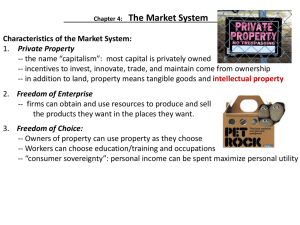
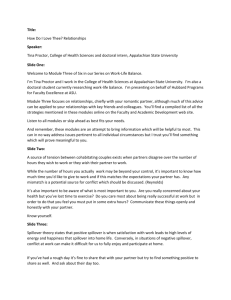

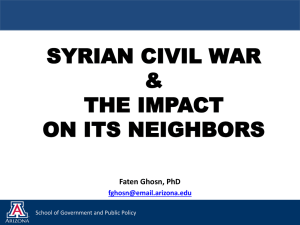
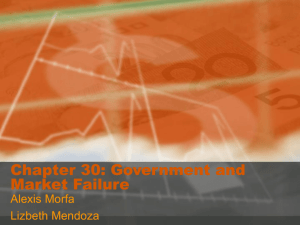
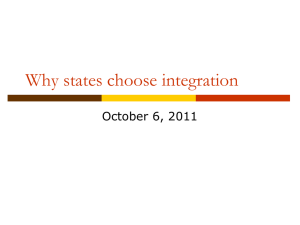
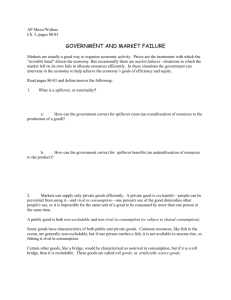
![[DOCX 51.43KB]](http://s3.studylib.net/store/data/007172908_1-9fbe7e9e1240b01879b0c095d6b49d99-300x300.png)
